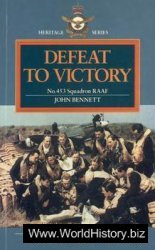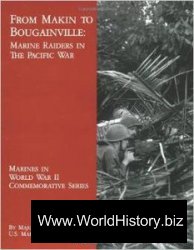Advance against Gaza by XXI Corps was intended to divert Turkish attention and draw off their reserves. Making the best use of a sustained bombardment and a force of tanks, the British infantry began the assault on the strongly defended lines of Turkish trenches on November 1. After a week’s hard fighting, Gaza was evacuated by its defenders and captured by British units on November 7 1917. MS.
Gaza Strip see arab-israeli wars.
Gazala, Battle of (May 26-June 17
1942). Both sides in the Western Desert were planning an offensive to break the stalemate on the Gazala Line — the British to drive Rommel back to Tripoli before the Allied landings in French North Africa (planned for the autumn of
1942), and the Germans to implement Hitler’s strategic concept for seizing the Middle East.
Rommel struck first in the opening phase of the battle (May 2629) with an attempt to outmanoeuvre Eighth Army (Ritchie) by driving with his armoured forces around the open desert flank to the south of the Free French positions at Bir Hacheim so that he could attack the heavily mined and fortified positions of XIII Corps (Gott) from the rear. He found himself trapped in the “Cauldron”, where XXX Corps (Norrie), commanding the British armoured forces, should have been able to annihilate the Afrika Korps (Cruewell until captured on June 28; then Nehring).
In the next phase (May 30-June 10), the battles of the Cauldron and Bir Hacheim were fought. Rommel set about opening a supp-
British 25-pounder in action, Gazala

Ly route through the British minefields by successfully overrunning the 150th Brigade “box”, which barred his way to the west, on June 1. Norrie’s attacks on the Cauldron mounted by 5th Indian and 7th Armoured Divisions from the north and east on June 5 and 6 were costly failures, leaving Rommel free to clear his rear by attacking Bir Hacheim. The Free French under Koenig resisted stubbornly until June 10, when they were successfully evacuated.
The final phase (June 11-June 17) saw the Battle of Knights-bridge and the investment of Tobruk. The Afrika Korps defeated the British armoured forces in engagements around the Knights-bridge “box”, which blocked the direct approach to Tobruk, enabling Rommel to invest the fortress by June 17. Eighth Army abandoned the Gazala Line and fell back to the Egyptian frontier. WGFJ.
Gazelle, Aerospatiale/Westland.
Light (1.9t) helicopter in service with AAC and in the French Army for reconnaissance and observation. See also army air corps.
Gazzera, Lt Gen Pietro. Italian. Supreme Italian Commander, Ethiopia, from May 1941; surrendered on July 6 1941.
GEE (for Grid). British. Usually classified as, although technically not, radar aid to air navigation. The time differential for pulses from ground transmitters to reach an aircraft was displayed on a cathode-ray tube from which the navigator could plot his latitude and longitude. First used by Bomber Command operationally on August 11 1941 and generally introduced in 1942. Revolutionized the accuracy of navigation but was later effectively jammed over most of Europe by the Germans. ANF.
Gehlen, Gen Reinhard (1902-79). Ger. Intelligence officer; 1942 head of foreign armies east, supplying Hitler with data on Red Army; dismissed, April 1945; captured and debriefed by Americans. Returned to West Germany 1946, established Gehlen Organization; 1955 headed federal intelligence service, heavily penetrated by Russians; retired 1968.
Geisler, Lt Gen (General der Flie-ger) Hans-Friedrich 0 891
1966). Ger. Commander Flieger-korps X until August 1942. Mounted first air bombardment of Malta in January 1941; then responsible for Luftwaffe maritime operations in the Mediterranean, with HQ in Greece.
Genda, Gen Minoru (b. l904). Jap. A naval pilot (Commander, 1941), Genda advised Rear Adm Onishi on shallow-running torpedo techniques for the Pearl Harbor attack, where he served as Adm Nagumo’s air operations officer. With Commander Fuchida, he was Nagumo’s chief air adviser at Midway, 1942. Postwar he joined the Japanese Air Self-Defence Force, becoming its c-in-c, 1959-62.
General Belgrano. Argentinian cruiser of 13,600 tons full load. Formerly the uss Phoenix, she had escaped from the Japanese attack on Pearl Harbor in December 1941 and had been modernized following her acquisition by Argentina (originally named Diecisiete de Octubre) in 1951. In 1982 she was carrying Exocet missiles in addition to her main guns. Adm Woodward, aware that she was at sea with two escorts and threatened his carrier group over to the east of the Falklands, sought and obtained permission from London for her to be sunk. Two out of three torpedoes fired by hms Conqueror struck and Belgrano sank with the loss of 368 men. At the time of the attack she was some 40 miles (64km) outside the exclusion zone previously declared in London. MH.
Geneva Agreements (1954). The Geneva Conference held May 8-July 21 1954 ended the Indochina-France War which centred upon the conflict in Vietnam. An agreement signed by the high commands of France and the Democratic Republic of Vietnam (drv) provided an armistice, regroupment of forces, and provisional partition of Vietnam roughly along the 17th parallel. The agreement permitted free movement between North and South for 300 days and established an International Control Commission to oversee implementation. A separate “Final Declaration” stressed that the 17th parallel was a





 World History
World History









